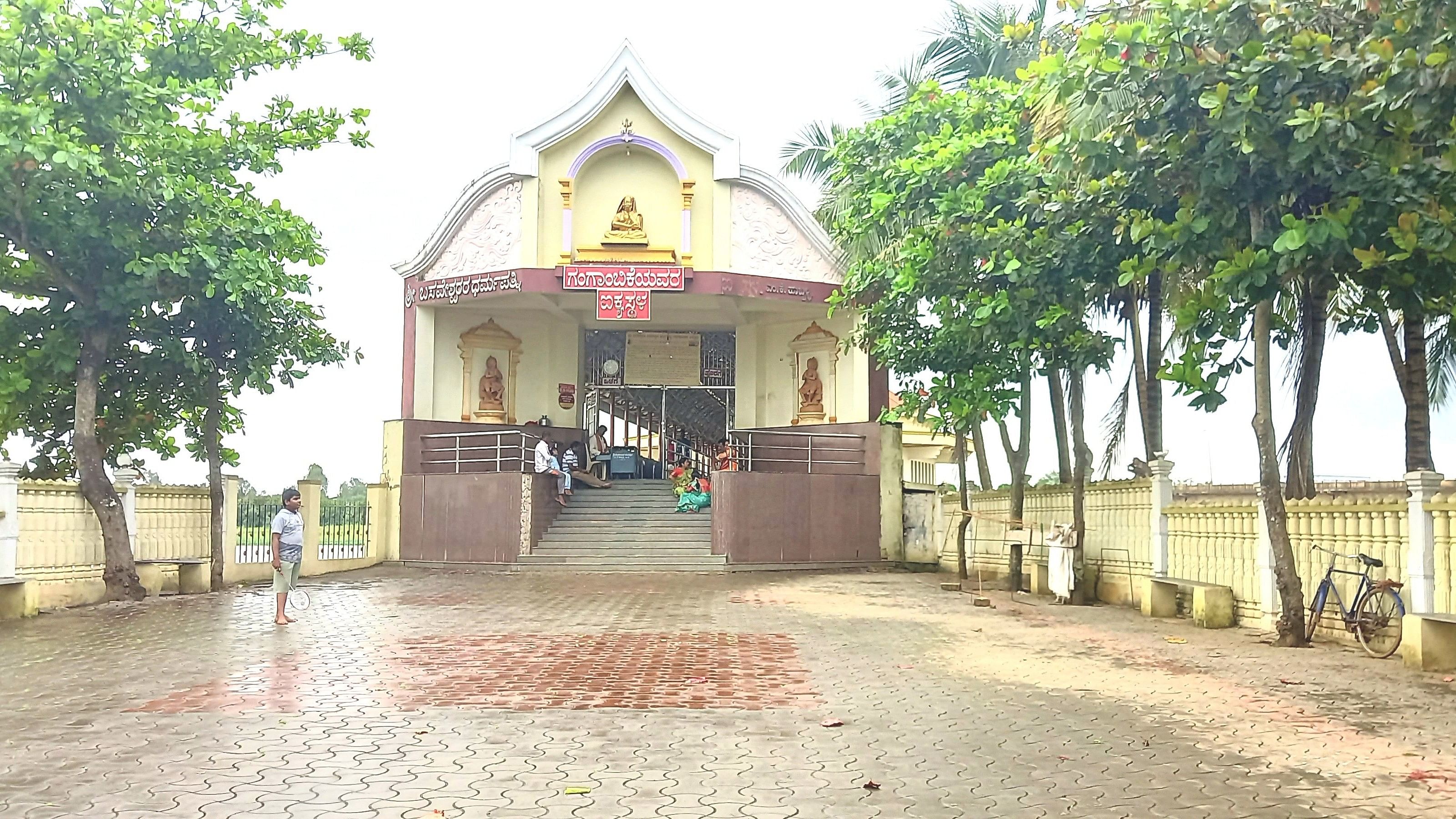
A view of Gangambike's memorial located in Belagavi district.
Credit: Swatee Jog
Located 25 kilometres from Belagavi, Mugut Khan Hubli (or M K Hubli) is a quaint village rich in cultural and historical heritage. Nestled along the Malaprabha river, the village is known for its sacred shrines, including the ancient Ashwath Lakshmi Narasimha Temple, and the tomb of the revered Sufi saint, Mugut Khan, who lived in the 19th century. The village is also renowned for its lush green sugarcane fields, and a sugar factory nearby that processes the local produce.
A martyr's memorial
One of the most significant landmarks in M K Hubli is the Gangambike memorial. This monument honours the wife of Basavanna, a key figure in the 12th-century social reform movement. Gangambike, known for her bravery and dedication to Basavanna’s cause, breathed her last here, defending the Sharana community and Basavanna’s works.
Visitors can reach the memorial through a welcome hall, and must then cross a bridge over the gushing Malaprabha river, leading to a towering 105-foot dome. Inside, a serene painting of Gangambike by artist S S Hiremath graces the entry hall that leads to the dome. The temple is housed several feet below ground, accessible by a long flight of stairs.
The original temple, built in stone, is around 800 years old. It lies below the river bed and hence the concrete dome is constructed to enable access even during monsoons.
For several centuries, the temple would be seen only for a couple of months in peak summers and other times, it lay beneath the waters. In 2009, the Kudalasangama Development Board constructed the Gangambike memorial.
Leading with bravery
Gangambike was the only daughter of Baladev, the prime minister in the court of Bijjala, the king of the Kalachur dynasty in the 12th century. Having lost his wife soon after Gangambike was born, Baladev had brought up his daughter with great affection. She is said to have been bold, intelligent and beautiful. Gangambike studied Kannada, Sanskrit, music, sword-fighting and archery in her childhood.
Once she grew up, Baladev started to search for a suitable groom for her. Baladev had heard the praise of Basavanna from people. Basavanna was also no stranger to Baladev — he was Baladev’s nephew.
Gangambike played a pivotal role in supporting his revolutionary ideas. At their home, Mahamane, Gangambike managed the ‘anna dasoha’ (free food service) with dedication. Lakhs of devotees flocked to Mahamane daily. She also actively participated in the running of the Anubhava Mantapa, established by Basavanna. This was a spiritual academy, and a space for discussing social and religious issues. With her keen intellect, she understood the vision behind the academy and worked to bring it to life. Basavanna even arranged for her ‘linga deeksha’, a spiritual initiation.
Mahantesh Bagi, a retired professor from Belagavi and an expert on this subject, details how the Sharanas strived to save the literature of Basavanna even at the cost of their lives, after the Bijjala army went after him. While Gangambike engaged herself in dasoha and later went to Ulavi with Channa Basavanna (Basavanna’s nephew), the other Sharanas scattered.
Following Bijjala’s murder, his successor Rayumurari Sovideva’s army chased them and tortured them. Gangambike was martyred at Kadrolli village near M K Hubli. She was buried here by the followers of Basavanna and the grave was hidden for several years under the waters of the river. The Akkagangambike Trust has been set up at M K Hubli, to highlight the valour of Gangambike.